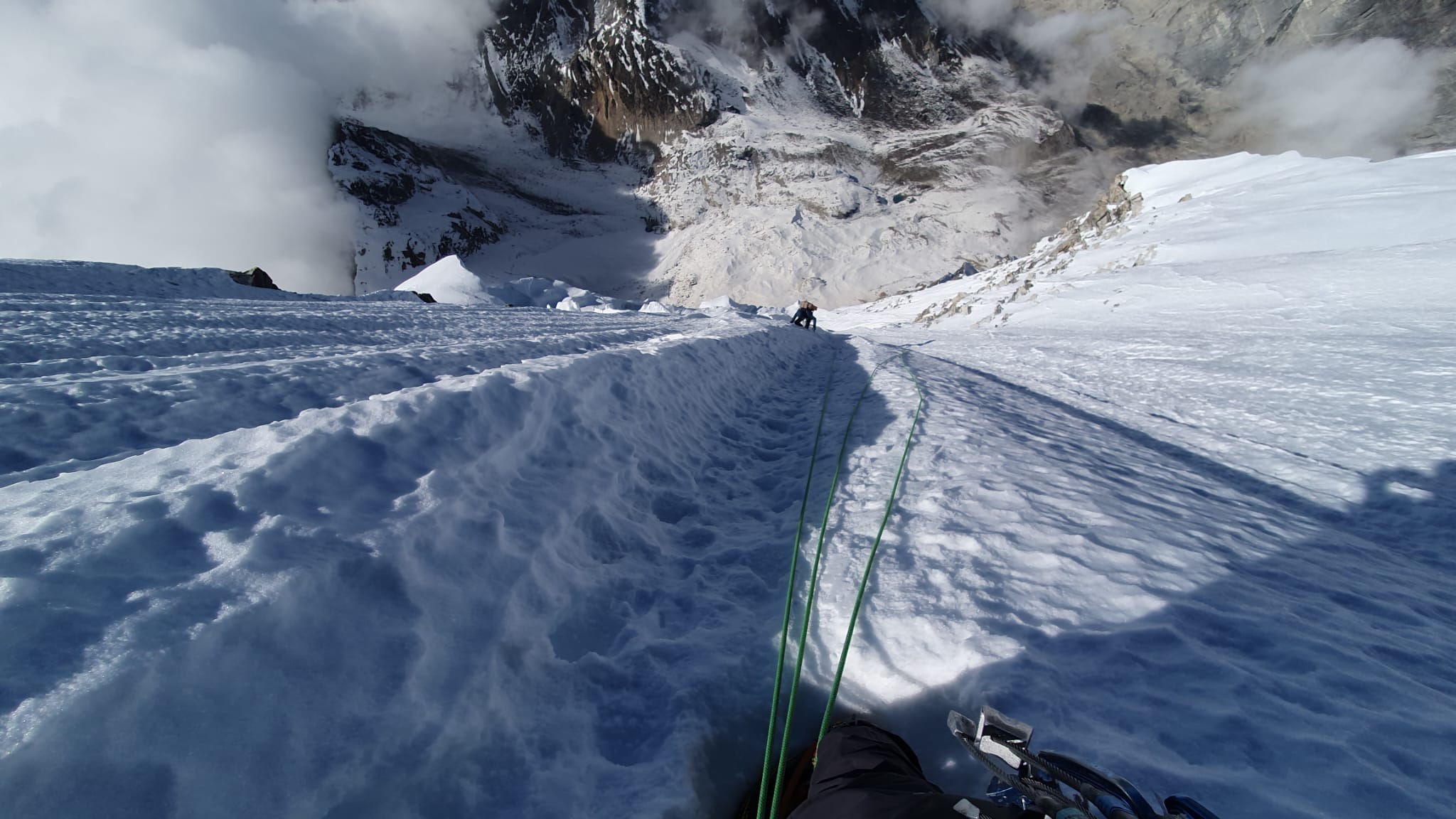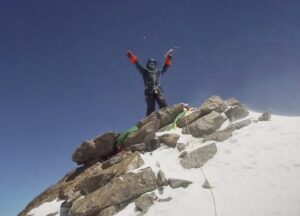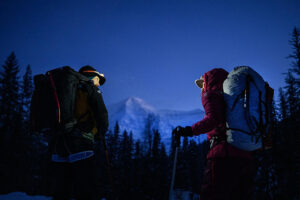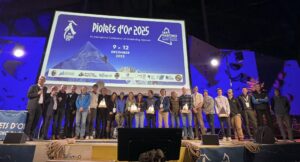Nathan White, Jack Morris, Connor Holdsworth, and Dave Sharpe of the UK took advantage of a short weather window last month to set two new lines on 6,000’ers in Nepal’s Rolwaling Valley.
The team reached Rolwaling on October 22 and acclimatized on Pachermo, an easier peak in the area. When they returned from the mountain, they found that crows had ravaged their camp, and a significant amount of food was either eaten or soiled.
With their supplies down to a minimum, they had no time to waste. They headed back to the peaks right away, seizing a tight weather window that had just opened. For efficiency, they split into two climbing pairs.
Two peaks
After a two-day approach, Dave Sharpe and Connor Holdsworth climbed Takargo East (6,152m) via the east face, a first. Nepal’s Nima Tenji Sherpa’s team had previously climbed the northeast ridge in 2014, and John Kelley of the U.S. soloed the south face in 2016. The Brits tried to link the summit of Takargo East with Takargo Main’s peak (6,771m), but they retreated short due to illness.

Connor Holdsworth and Dave Sharpe. Photo: Dave Sharpe
Holsworth reported that they climbed the 600m face without roping up, on difficulties they assessed as “mostly Scottish II with some steps of III and finally one harder, looser step of IV right at the top.”
The climbers set their first bivouac shortly after reaching the summit. Incredibly, in the morning, there were snow leopard pawprints all around their tent. They spent the next two days on the long ridge leading to Takargo Main, but except for short sections of good ice, all they found was “very loose rock and bottomless untransformed snow,” said Holsworth.
On the third day, Holsworth’s health declined. “I had been feeling pretty rough since we left the glacier, and some specks of blood in my vomit made it feel like the right decision was to head down,” he said.
The weather was also turning for the worse, and the climbers made it back to camp just before a snowstorm hit.
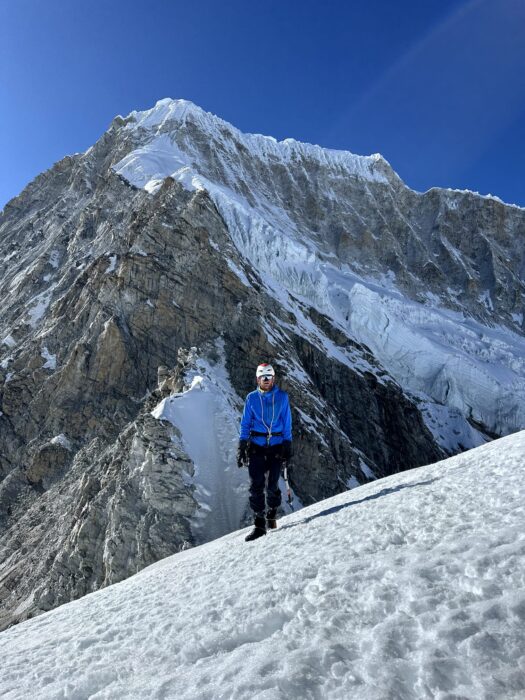
Dave Sharpe with the main summit of Takargo behind. Photo: Connor Holdsworth
Linkhu Chuli 2
Meanwhile, Nathan White and Jack Morris went for an impressive ridge that splits the north and northwest faces of 6,659m Linkhu Chuli 2.
“While the serac-covered walls were very active, the ridge line provided an incredibly direct and objectively safe passage through the chaos,” the climbers reported.
A couloir led the climbers to the ridge, where they found sustained difficulties and a precarious bivouac location. Check the video below.
Eventually, they climbed beyond a “point of no retreat” on very steep terrain, hoping the route would ease near the summit. Just the opposite.
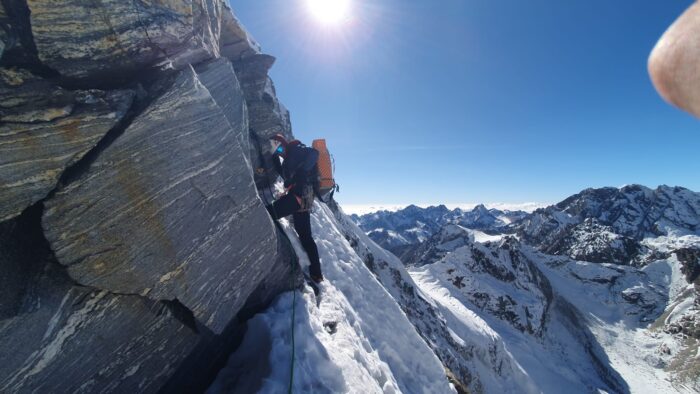
Traversing below the rock band on Linkhu Chuli 2. Photo: Nathan White
“We faced a final impenetrable rock band, so we had to traverse towards the serac on the northwest face to outflank and unlock the final part of the route,” White wrote.
This way, they reached the northwest summit. They aborted their plan to continue to the main point, just a couple of hundred meters away, as a storm was imminent, and the team still had to find a suitable descent route.
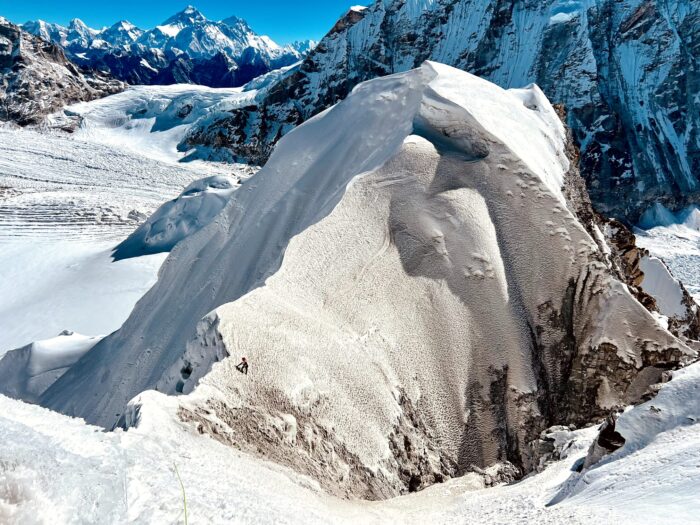
Looking back toward Takargo East. Photo: Connor Holdsworth
Nick of time
“Due to the unconsolidated nature of the snow, loose rock, and lack of ice, the line of
ascent wasn’t a viable option for the descent, so we opted to go down the west
ridge onsight,” White wrote. “With much downclimbing and abseiling through seracs, we arrived on the glacier just as the weather was deteriorating.”
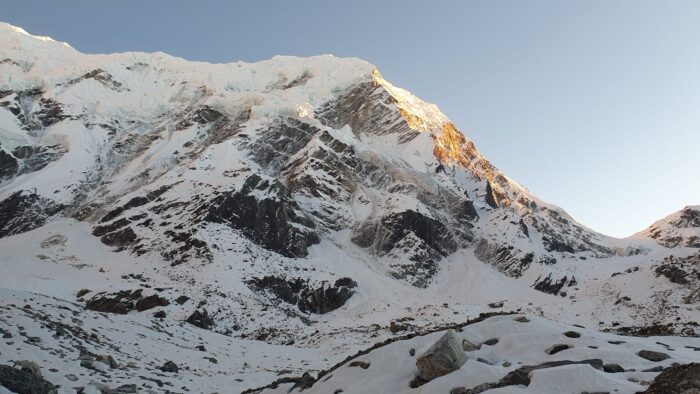
White and Morris climbed Linkhu Chuli 2 following the right-hand-side ridge on the line between shade and sun. Photo: Nathan White
The team proposed ED2, M6, WI3 for the 2,500m route, which they climbed in four days. According to The Himalayan Database, an international team first climbed the peak in 2019 by the west ridge to the west summit.
As the team noted, 24 hours after they finished, the snowstorm dramatically changed conditions. The popular Tashi Lapcha Pass was impassable, and several trekking groups in the area had to evacuate Rolwaling because of the deep, unstable snow.
The team admitted that they had “threaded the needle” between the difficult
line and the brief weather window.
